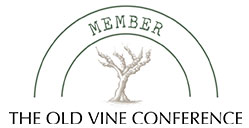The Patio of
El Hombre
At the back of the grape reception area is the entrance to the winery with two spaces in which the light welcomes visitors in a setting of beautiful, simple, fine and precious materials: wood and stone, which speak to each other with the same natural ease as they do in the surroundings of the cellar itself.
The first space is a rectangular patio, open to the sky, with a small network of wooden beams in the ceiling which provide a lovely interplay of light and contrasts which give the area an evocative texture, warm in winter and bringing an air of coolness in the hottest months of the year. On the floor, the bricks are interspersed with various stone geometrical designs and at the western end, a small fountain with a sculpture by Miguel Ángel Sáinz. This is a stone model made by the artist from Aldeanueva for a work which can be found in Logroño in the Plaza del Parlamento, next to the wall of the gate of the Revellín tower The Tabacalera company, to mark their centenary, donated Miguel Ángel’s creation to the capital of La Rioja.
The title of the work is ‘Hombre histórico’, and it represents the trunk, but without any limbs, of a mature, athletic man with his hair swept back as he turns his head to the right. It is the first direct reference in the Queirón bodega to the figure of Miguel Ángel Sáinz and it expresses the simplicity of his outlines, the realism of his sculptural language and the evocation of classicism and mythology. It is a thought-provoking male nude, in stone, without the least affectation.
The Patio of El Hombre highlights the humanism of wine, the importance of a balance with nature and the weight of tradition, not as a burden, but as a legacy which has to be protected, defended and cared for future generations of growers.
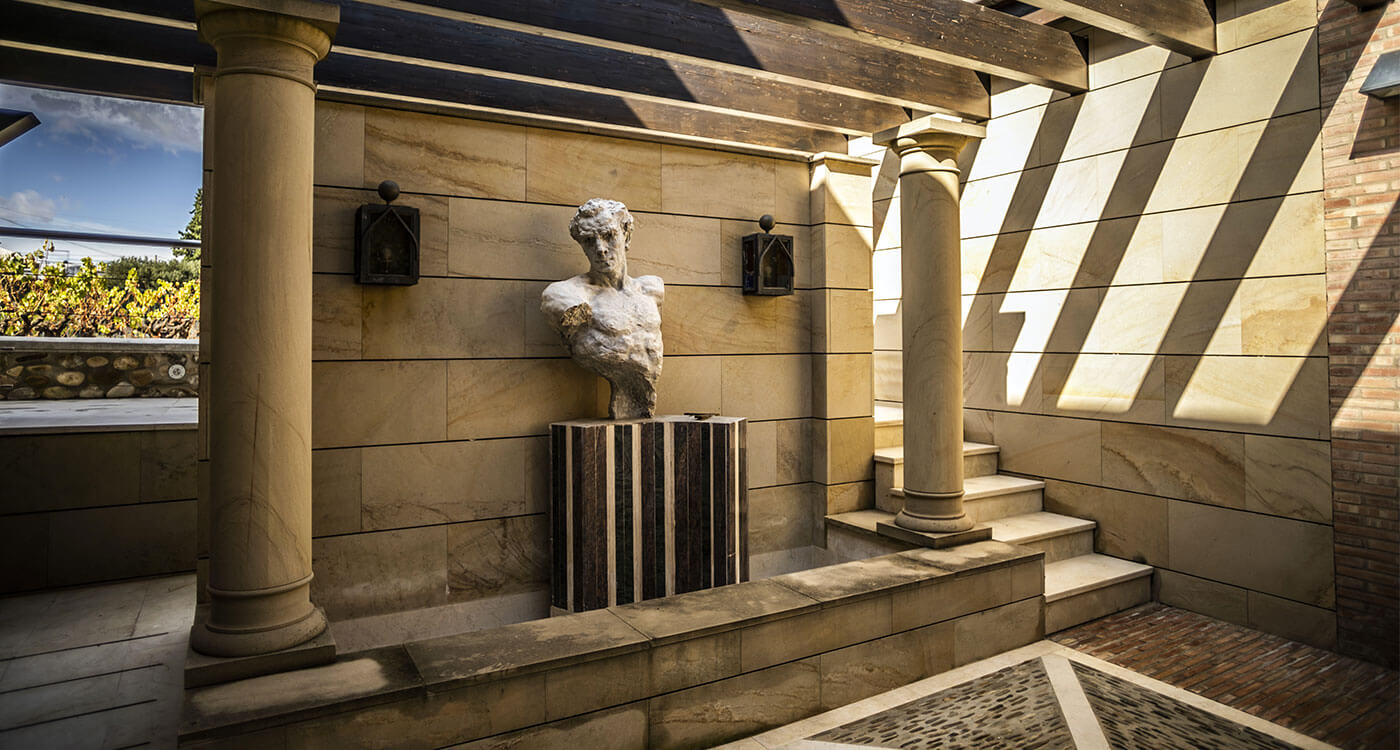
The room of
El Encuentro (The Meeting)
On the southern side of this quaint little patio there is a wooden door leading to the entrance to the cellar through the room of El Encuentro, thus named in homage to a film short also made by Miguel Ángel Sáinz, a many-faceted artist who also dabbled in experimental cinema in the nineteen eighties. This room represents the entrance to the cellar, the embrace between the vineyard and the winemaking process. The first surprise that strikes the visitor is the huge window with views over the spectacular cliff or rocky outcrop that protects the southern part of Quel and its clifftop castle. It is a geological feature which has a cliff of a hundred metres in height that was created by erosion by the river Cidacos and from which from the Queirón bodega can be appreciated in all its glory, with the 15th century castle crowning such a spectacular scene.
In the room of El Encuentro you can enjoy the Queirón wines and it underlines their passion for the work of Miguel Ángel Sáinz with the presence of the mythical, iconic figure of the sculpture of Oenopion and the centaur, which is the hallmark of the Ontañón Family par excellence. In Queirón, as in the winery in Logroño, Gabriel Pérez has sought to recover the artistic memory of Miguel Ángel Sáinz and his representation of this Greek myth transporting amphorae of wine on the back of a centaur named Pholus. The work is an allegory of the union between reason and instinct, intelligence and nature, two of the key factors in winemaking. The room of El Encuentro has an oval-shaped wooden bar and a display case for wines.
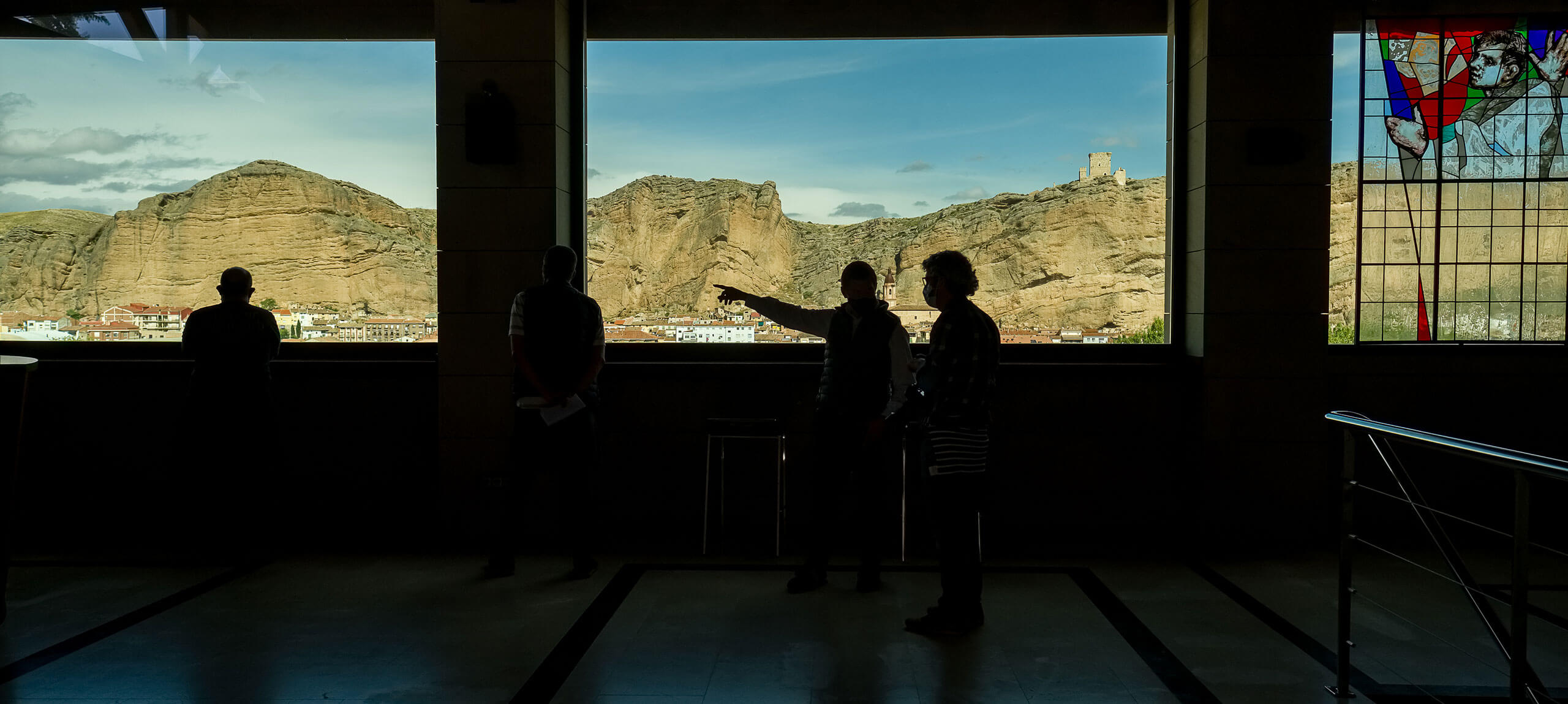
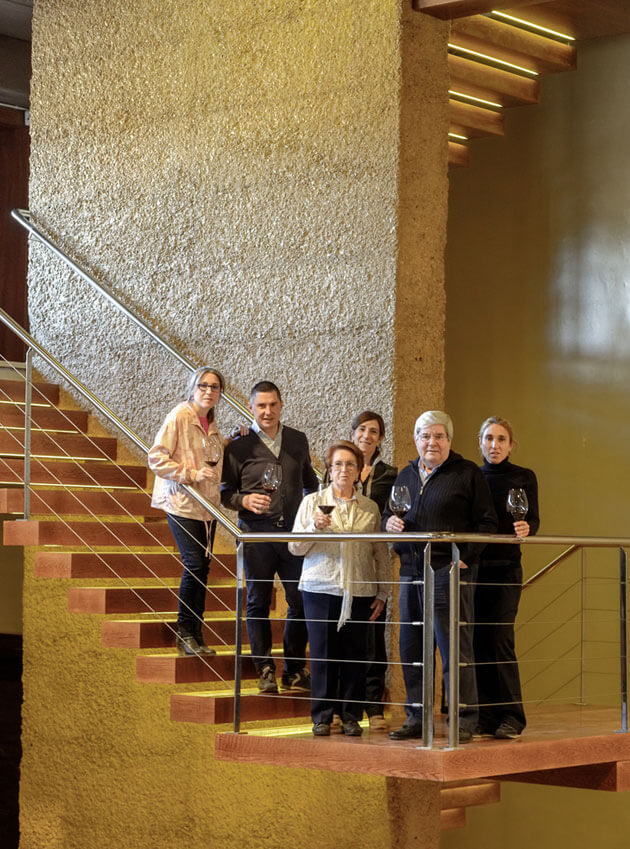
The Cantilever
Staircase
From this space, via a spectacular wooden cantilever staircase you descend to two essential levels of the cellar: the vinification room and the barrel room. This staircase is supported on a large concrete and stone pillar which reflects the same shades of colour as the Quel crag, on which the iconic, 15th century clifftop castle stands. The staircase leads down to the final section in the barrel cellar and continues from there to the room of El Encuentro. The staircase, as well as its practical use, recalls the connecting link that exists between the various small wine cellars of the old historic district, as in some cases they were interconnected to each other at different levels. This sense of cooperation between the old growers of Quel is preserved as one of the keys in the Queirón ethos, since going back to their roots and the concept of a village wine, and of a zone, go way beyond the family itself and expresses the connection with Quel, and with the history of its wines and its people.
Vinification Room
the gravity of
the 21st century
One of the most unique features of the historic Bodega Quarter of Quel is the existence in each of the cave-cellars of a vertical orifice extending outside which served two purposes. Firstly, it was a ventilation chimney which allowed the cellar to breathe and, more importantly, for the grapes to descend from the upper part to the winepress of each cave. In the uppermost levels of the slope in which the wine cellars are situated there are tuferas or luceras, long chimney chutes used to unload the grapes via a system of vertical galleries excavated inside the rock and by gravity the clusters fall into the winepress below where they would ferment once they had been trodden.
In Queirón the legacy of these historic wine cellars has been recovered and gravity is used for making the wine according to the same basic philosophy, but with the use of modern technical and technological advances.
The gravity system means that the grapes received and sorted in the upper part of the bodega for their immediate processing fall by their own weight so as to avoid rough or violent movement whose consequences (non-natural crushing, heating up or oxidation) would have undesirable effects on the quality of the wines.
Furthermore, for de-vatting the fermented red must to rack it into the press, mechanical pumping would require a greater intensity of pressure and cause an uncontrolled extraction of tannins and bitter substances we do not want in the wine. By using gravity in the winemaking process, you do not need to use pumping; the fresh must falls by its own weight into the fermentation tanks placed below and, finally, the wine flows without any pumping to the barrels situated on the floor below.
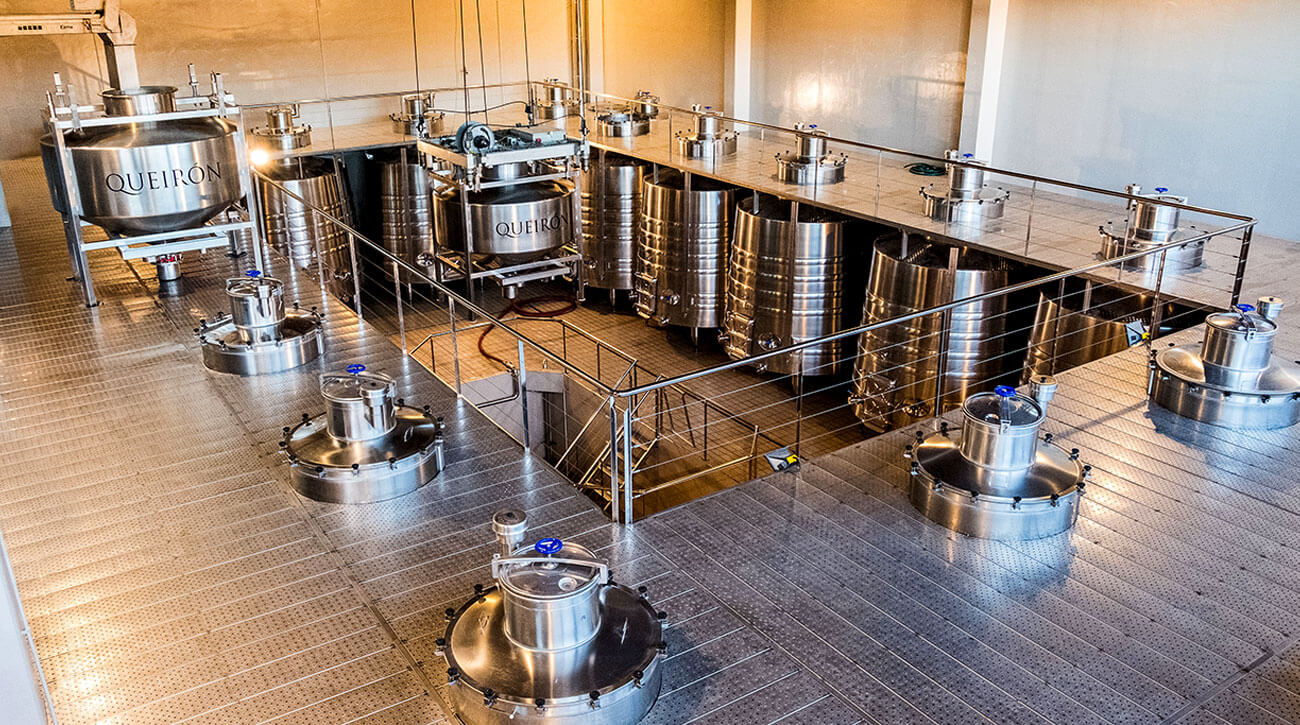
Gravity,
the comportas
Bodega Queirón follows an original system which consists in the following stages to make use of gravity. After reception in the upper part of the building, where a double selection process takes place, first at cluster level and then the individual grape berries, the grapes are placed in small containers (called comportas as a reminder of the traditional recipients for transporting newly harvested grapes), which are lifted by crane and positioned at the top of each fermentation tank in order to let the grapes drop into them. In the middle of the vinification area there is a torco (in the same way as we have recovered the word comporta, in this case we have recovered the name of the stone tanks which were placed at the foot of the winepress to collect the wine) containing another comporta for racking off the wine and, using a hoist, position it back at the top of the vat, having the same effect as pumping over but by using only the force of gravity, permitting smooth, even extraction with each of these processes. The cap is stirred and punched down so that the aromas, pigments and phenols it contains are distributed through the liquid. Thus the use of pumping is completely avoided and aromas are preserved which would be lost due to the friction caused by pumping over.
The barrel
cellar
We are now in one of the most striking and exciting spaces in the bodega. The barrel cellar is a real temple, marked by the sensation of dark calm in which the wines are left to age. The inspiration for Gabriel respires the same codes that Miguel Ángel Sáinz established in the Bodega Museo Ontañón in Logroño, the use of fine materials like wood, the stone floors, sleepers on which no more than one row of barrels is stacked, brickwork pillars and lighting from the floor and artistic lamps in the same style as those Miguel Ángel designed for the original bodega in Logroño. The barrel cellar is, in addition, a vital space for making the wines of Queirón because it is home to casks from a wide range of sources, styles and types of toasting of the oak. One of the architectural features is the shape, since the room is open towards the left hugging the mountain and creating a foreshortening effect which is very characteristic of the bodega and which is replicated at the level below where the bottle cellar is located.
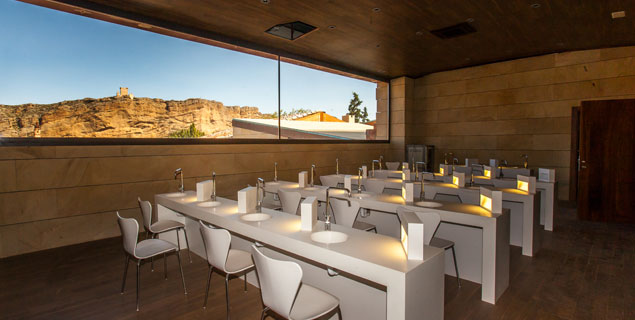
Tasting
room
On the level of the barrel area there is another very important space in Queirón, the classroom-tasting room with 16 posts and natural light through a large window, through which you can see, as in the room of El Encuentro, the Quel crag. The concept of this room is for use both by the bodega for its work and for holding different seminars and meetings with oenologists, sommeliers, bloggers, instagrammers, chefs, students and wine lovers.
The
bottle cellar
The Queirón bottle cellar also has a language marked by the dialectic drawn by Miguel Ángel Sáinz, which Gabriel Pérez has recovered and which shapes the identity of the Ontañón Family. It is the last floor of the winery in descending order. You get to it via a staircase which communicates with the Barrel Cellar and the first space is a wide passage in which five small triangular interstices open up to the west to house sleepers with bottles arranged in memory of what Miguel Ángel Sáinz designed in the Logroño winery’s bottle cellar. In the wall to the east there are also niches with bottles and two very deep caves that continue as far as the bedrock for the same purpose of ageing the Queirón wines which are marked by the silence, calm and darkness. At the end of the passage, the space veers to the west and opens up into an inner patio which leads on into another three areas. The first is a continuation of the bottle cellar with a long passage flanked by sleepers on either side and a final curve with niches in the form of rounded arches with caves where the historic bottles of the different harvests and vintages of Queirón can rest.
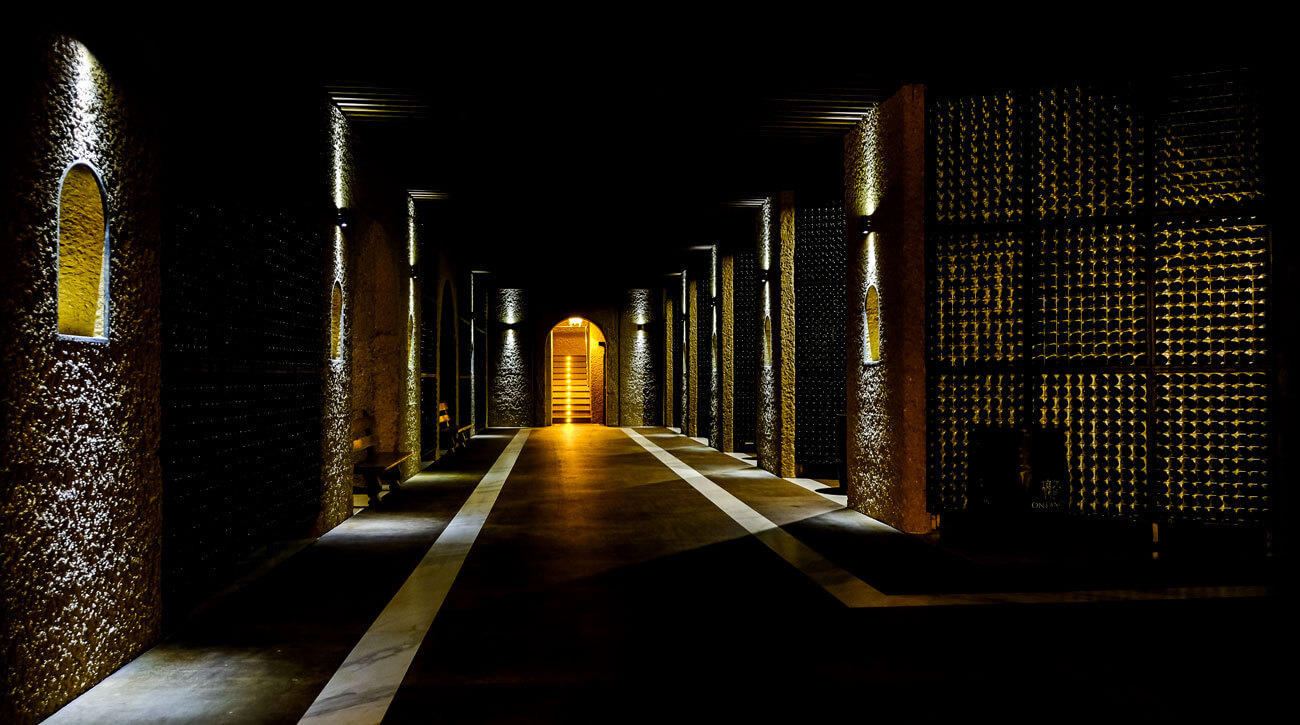
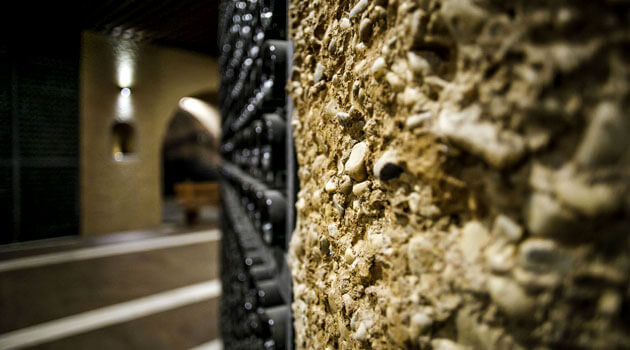
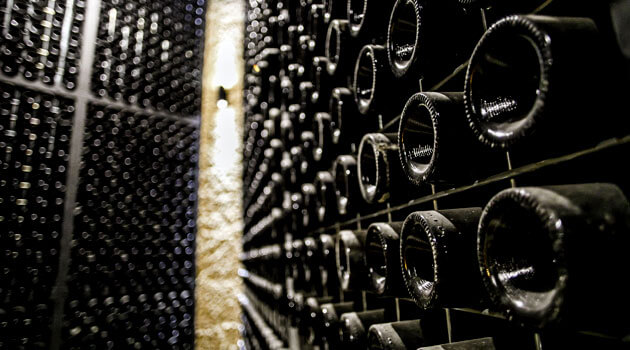
The vat room,
the eggs and the earthenware jar
There are two more rooms. One with oak vats, as well as two concrete eggs and an earthenware/ceramic jar; as well as another reserved for the bottling line. The vat room holds a number of these large wooden vats which are so typical of the most traditional wine cellars. In Queirón, there are nine vats, all made of oak and tapered in shape, positioned vertically (do not confuse them with the foudres which are large barrels positioned horizontally and whose base may be round or cylindrical). The main feature of these vats is that the quantity of wine which is in contact in proportion to the possible entry of oxygen is lower. This means that as there is less oxygen exchange, there are fewer oxidative-reductive interactions, so that the anthocyanins stabilise better.
This room also has two egg-shaped concrete vats. Their use encourages micro oxygenation due to the porosity of the material from which they are built (limestone and clay) and moreover, their shape creates a gentle internal current in the form of a vortex which helps produce very smooth ageing on very fine lees, something which again favours the complexity, finesse and body of the wine.
The latest vessel to be incorporated into the cellar to date is an earthenware jar. The microporous structure of the baked earth allows a liquid/gas exchange between the contents and the external atmosphere. This offers a slow but constant contribution of oxygen to the wine. Its shape and the material allow a lateral adherence which improves decantation and inversely facilitates the stirring process of the finest lees, with the added advantage that due to the effect of the micro oxygenation, it neutralises the reduction character.
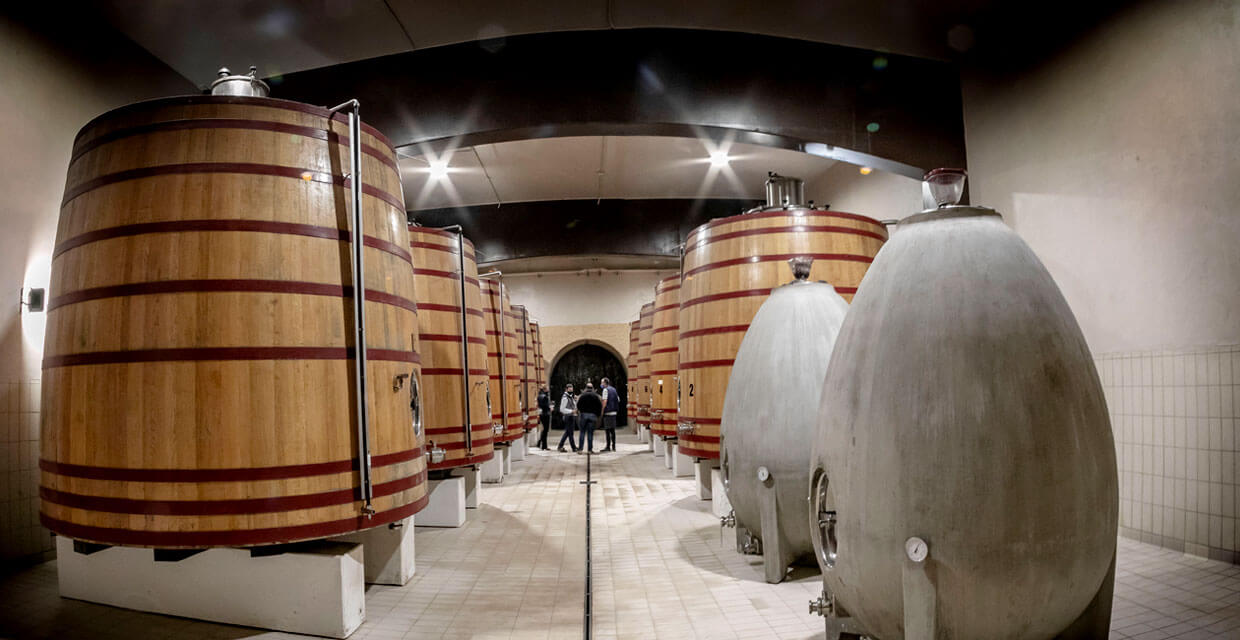
The castle
patio
and even more spaces
The Queirón winery has other spaces which come off the various heights and levels of each of the zones in the bodega. For example, there is a striking ampelographic garden in which various specimens of the different castes or varieties cultivated in the Rioja appellation have been planted. This has been done for educational purposes in order to show the differences in the behaviour of each of the families through the growing cycle. There are various patios with grills for different social events. One of these is called the Castle Patio because it offers a stunning view of the Quel clifftop castle and crag. The winery, moreover, has two dining rooms, kitchen, offices delivery bay and toilets.
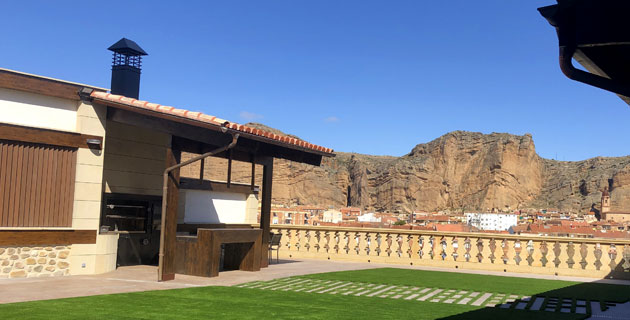
The family
dining room
Alpha and omega of the bodega
The Queirón bodega has been created as an original space which has its roots in the family bodega from 1870. Gabriel Pérez organised the design of the architecture of Queirón so that it would all make sense, arranged around a place which has always been linked to the family: an intimate, simple dining room/picnic area situated at the level of the bottle cellar, which has a very special symbolic value for the Pérez Cuevas, since it is its authentic meeting place for family celebrations. The space communicates inwards with the central patio of the bottle cellar and to the outside with the main street of the Bodegas Quarter of Quel. Gabriel has kept it intact, austere and simple. It is the symbol of the coherence of the Queirón project, an immediate reminder of their roots, of the meeting of the family’s past with the great commitment to the future that the Queirón bodega represents for them, which is all based around the relationship with this place which is so dear to all the members of the family.
Its decoration is popular and austere. It contains a small stained glass allegory of Quel, works by Miguel Ángel and two verses painted on the walls by Gabriel himself, taken from Carmina Burana, that collection of 12th and 13th century Goliard Songs and which moved the founder of the bodega when he listened to the cantata of the same name by the German composer Carl Orff.
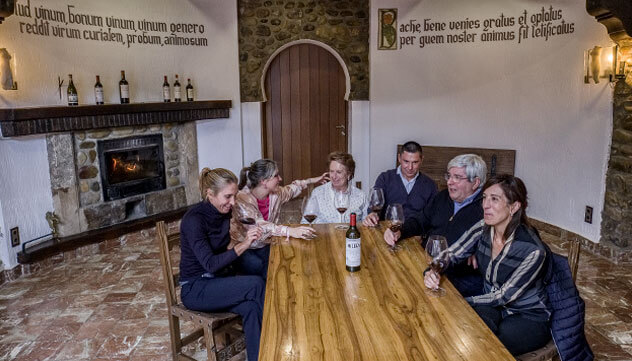
Bache, bene venies gratus et optatus
per buen noster animus fit letificatus
Istud vinum, bonum vinum, vinum generosum,
reddit virum curialem, probum, animosum
Bacchus, you are welcome, pleasing and desired,
through whom our spirits are made joyful.
This wine, good wine, noble wine,
makes a man courtly, fine and spirited.
